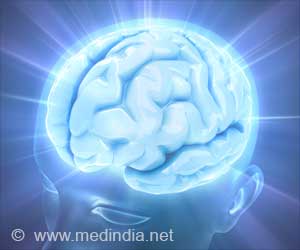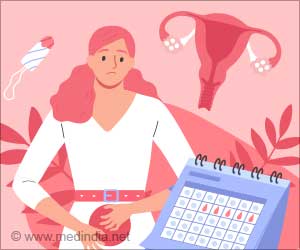On National Doctor’s day we interviewed a doctor - Dr.Makani Hemadri, who has seen the best of both worlds.

Dr.Hemadri is also an Honorary Clinical Tutor at Hull York Medical School and an Honorary Research Fellow at the Yorkshire Laser Centre. He has a recent MBA from Leicester. His current interests are day case and short stay surgery and innovative care delivery. Hemadri has been cited as a ‘Hidden Hero of the NHS’ by the British Medical Association. He currently holds the award of ‘Leaders for Change’ from the Health Foundation, London.
Interview:
1. India is gaining popularity as a healthcare destination. Having contributed both in India and abroad, what in your estimate are the key challenges to providing world class healthcare in India, with emphasis on infrastructure, environment, systems and technology?
We can only start by addressing the general infrastructure development. The current impression is that China is developing its national general overall infrastructure where as India has numerous individual pockets of brilliance. Overall infrastructure has to be advanced and stable.
One of the reasons which could hinder the growth of India as a healthcare destination is the wide differences of the health status within the Indian population. If India is seen as a country where poor health and unequal health standards are prevalent, it will act as a limiting factor to the extent to which it has a draw on its potential as a destination for health care. The micro-environment of high end healthcare providers are indeed well thought of, deservingly so.
Technology is perceived as being advanced when one can afford it.
The ability to deliver dependable adult and paediatric resuscitation standards uniformly and widely is essential to an emergency service.
Acquiring training and maintaining certification should be made imperative for all doctors. This does not mean all doctors will do the same courses to the same standards but each should be well versed in a certain aspect of emergency care within their choice or within their specialty.
Providing an emergency service requires a high level of organization of services as seen for example in the UK ambulance service or the UK NHS Accident and Emergency departments or perhaps the Australian flying doctor service.
Emergency services are generally treated as a second class service in the public sector and as a potential cash cow in the private sector. Instead, it should be treated as an independent specialty in its own right.
Organ donation is not often thought of as a part of medical emergency service provision but it is easy to see how the casualty department can actually save another life if it could not save the life of the patient who is/was in front of them.
3. Brain drain among Doctors is not a new phenomenon. The desire to migrate is driven by a number of factors, though the initial trigger is to avail specialty training abroad. How can we reverse this trend?
Availability of opportunity to train and progress within one’s own country is an important issue in preventing brain drain. How many Americans go out of their country to have training? Very few and that too for only very highly specific training that may not be available in America.
I do understand that there are valid reasons why talent should be retained within India. If brain drain has to be prevented, general and medical infrastructure must improve in B and C towns and in villages; that will enable doctors to have the confidence that they can practice what they have learnt to a good standard while having a reasonable quality of life.
But, do we need to see migration as a brain drain? Could we not see it as a human resource export that is benefiting the world and India?
4. On the same breath, reverse brain drain amongst qualified and experienced medical experts is also taking place. In what way can India make the transition easier for such medical specialists desirous of returning home?
To be honest, it is much easier than before for doctors to return to India. The growth of the private sector and some non-profit making institutions have helped reverse brain drain.
Corruption by which I not only mean financial but of all other sorts as well is a major worry for returning medics.
Access to networks will be very enabling for doctors wanting to return to India. Instead of seeing foreign trained specialists as competitors, if they are seen as collaborators in driving up patient care standards, all round benefits are likely to be immense. Returning doctors should be seen as a long term asset to enhance the practices of existing networks rather than taking a short term view that the existing network many end up with a smaller size of the cake.
Medical infrastructure, technology and financial security are important but I believe they are rapidly improving as India’s economy grows.
5. Talking of building relationships with patients, how does the Indian approach compare with practices abroad, especially in the area of patient education and counseling?
Doctors are amongst the most trusted of all the professions. In the developed countries patients have an automatic expectation that there will be a high and uniform standard of care; systems exist to ensure that happen. An important part of delivering a high quality care is providing complete information. The information is provided by a number of professionals to the same patient using many modes. What I mean is, a patient for whom a surgical procedure is planned information is provided to the patient by means of leaflets, booklets, video, etc even before they come into the hospital, at the hospital junior doctors, surgeons, anaesthetists, general nurses, specialists nurses, patient groups etc will all provide information much of which will have common threads but will have their specialist emphasis. This information builds increasing confidence in patients.
However, the expectations are pushed up so high that when things go wrong patient demand detailed explanations and on many occasions take recourse to the law to obtain compensation and justice.
The situation in India is quite different with the lead specialist doctor providing most of the information with very little coming from other directions; for example it will be very unusual for nurses to provide much in depth information. I believe that the quality of information provided by the doctor is these days much better in the private sector especially among the younger medics in urban areas. The internet has also been a great equalizer of access to information amongst the educated. I learn the situation is quite different in the rural areas where old fashioned paternalistic attitudes persist. The Indian patient is still very trusting, emotional and fatalistic.
The point is that different cultures in different parts of the world have a bearing in the style of patient education and nature of counseling though the differences are narrowing due to evolving common channels of information delivery.
6. With medical information available at the click of a button, do you think this trend is a boon or a bane? What is your advice to our readers?
Information asymmetry has in the past, delivered disproportionate powers to the experts encouraging paternalistic behavior often and even arrogant behavior on occasion; that has acted to the detriment of the profession. A well informed patient is probably a more confident and less anxious patient. Being aware of what is happening with your health enables one to cope better should untoward incidents unfortunately occur.
It is therefore my view that more information that is out there on the web the better for the profession and for the patient. It is a definite boon.
My advise to your readers would be to keep well informed about their own health by visiting reputed websites and use that knowledge to ask questions when they visit their doctors. Further, physician rating as being tried in your website if used in an unbiased and intelligent manner can only lead to better quality of medical care.
7. On many occasions, doctors have been accused of being driven by bottom line figures. Are hospital managements to blame?
Delivering healthcare is an expensive process. Even an economically booming India does not have a bottomless pit of money in the public sector; the private sector cannot provide healthcare without healthy finances and by definition profit. At some point of time even wealthy paying patients have to draw a line on how much they can spend on healthcare.
The issue is about orientation and primacy. Does the healthcare sector exist to make money by delivering care? Or does the healthcare sector exist to provide healthcare by using money as a resource? As doctors we should take the latter view; that orientation would include making a profit as a private provider or prioritizing (rationing) in the public sector.
Unfortunately these become fuzzy on many occasions leading to accusations. I don’t think patients want to see hospitals and doctors becoming bankrupt; but I am sure patients would like to feel that their health is the main priority of the provider and money is a mere tool to achieve it.
8. On National Doctors Day, give us your thoughts on how India could improve the lot of doctors in the country?
Uniformity of basic standards and infrastructure is a fundamental aspect of job satisfaction for doctors. In a country which has the high standards of Apollo and AIIMS there are also PHCs unsuitable and unworthy for inhabitation let alone medical treatment. It is desperately important for the government to address this problem. Resolving it will not be quick or pain free but it lead to a major transformation in the attitude of doctors and the attitude of public towards doctors.
Availability of opportunities for training and progress based on merit also becomes important.
Developing India’s own models will give Indian doctors a collective sense of pride and achievement. For example the white revolution, the green revolution and rocket technology is a matter of pride for the Indian scientists. The Jaipur foot and Aravind eye care system are a few limited examples in the health sector.
9. Doctors are at crossroads – the ethics are on slippery slope with kickbacks, unnecessary investigation, unnecessary surgeries; how do we stop the rot.
I don’t think one should take such a bleak view of all doctors. Within the medical profession, like all other professions, there are bad apples. There are many ways of dealing with such doctors. Firstly, the full force of the law should be applied where there is good evidence to take such a course of action; secondly fellow professionals should openly frown on such practices; thirdly the society should become more demanding including participating in social action to expose such practices.
There are many other things that can be done. The question is whether the country as a whole has the moral muscle to engage in such action in a fair and unbiased manner. That of course is a large and separate debate by itself. As an optimist, I do feel that sustained and concerted action even by a small group of determined persons or institutions can stop unethical practices.
10. Your views on re- certification after 5 years as planned by doctors.
Re-certification as a concept is essential. The difficulty arises in how it is achieved. In the USA I think they have an examination where basic and specialist knowledge is re-visited every 5 years but set at a lower level than what is required of a trainee at their end of training certification examinations. In the UK while a debate is currently on, it is agreed that for now re-certification will be achieved with on the job annual appraisals as the mainstay; the annual appraisal is a very broad based instrument of a comprehensive nature.
In India, a very large country with diverse standards of practice an effective re-certification can happen only when it is designed specifically for Indian conditions. Simply setting up re-certification for the sake of it or copying some other country’s model will only be seen as another hurdle by doctors and may not serve the desired effect of maintaining clinical knowledge.
My personal view, is an Indian recertification should be based on a points system where points are continuously acquired multimodally consisting of essential and optional components administered by a centrally held validated portfolio.
Re-certification will not be easy but if designed and administered correctly, it will certainly in the long run have positive effects on patient care.
Source-Medindia
SAV/C







